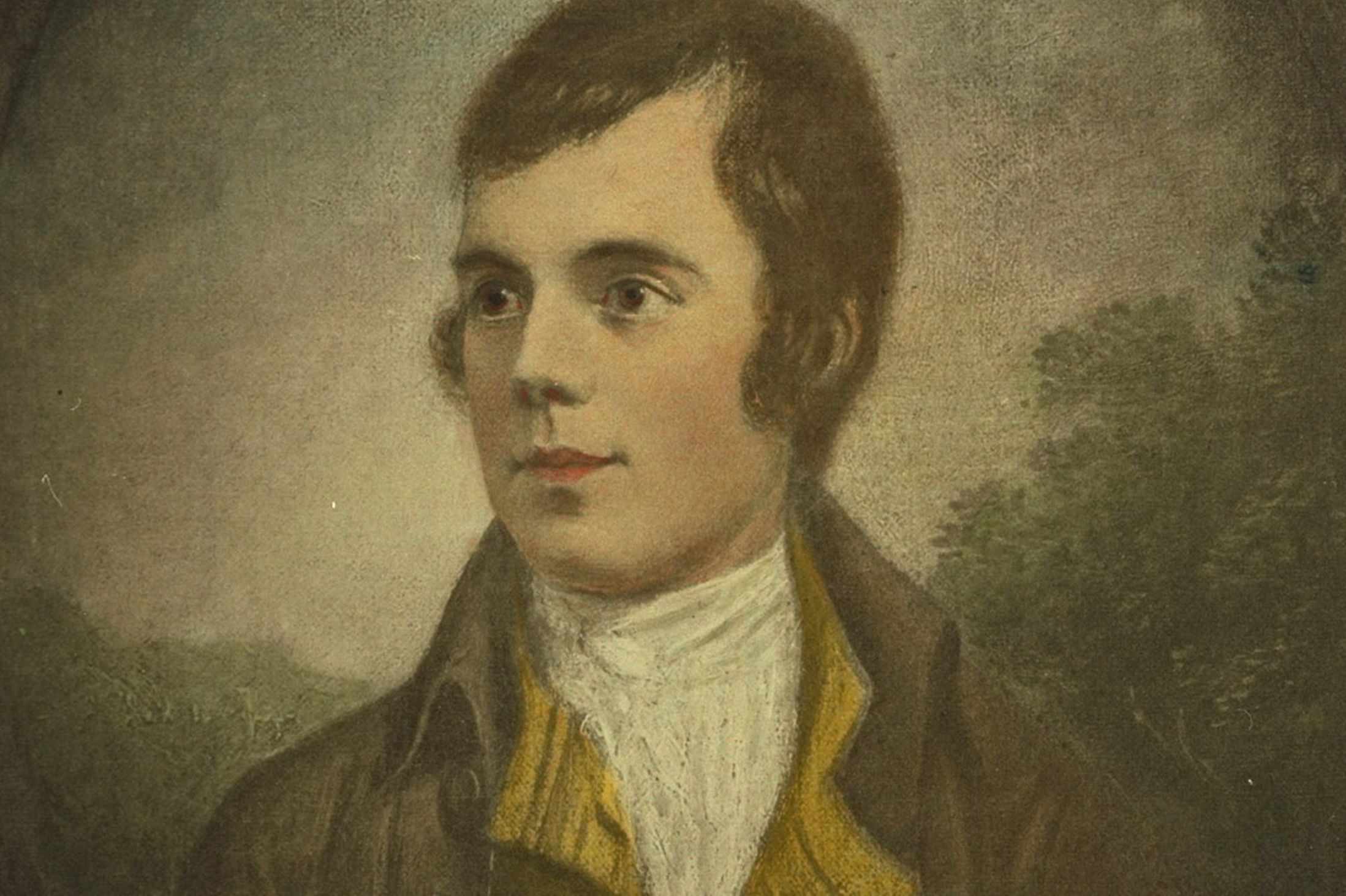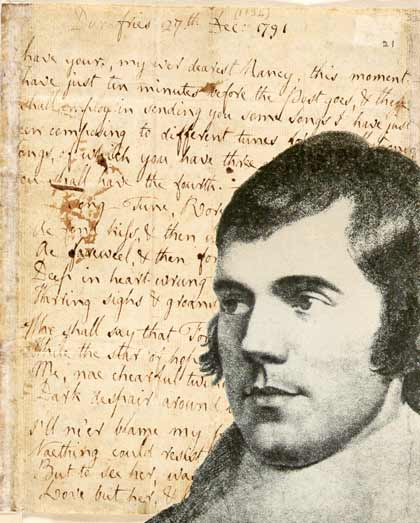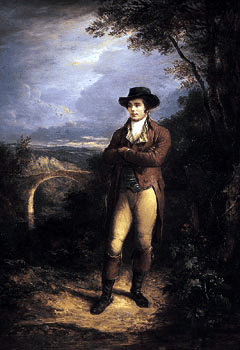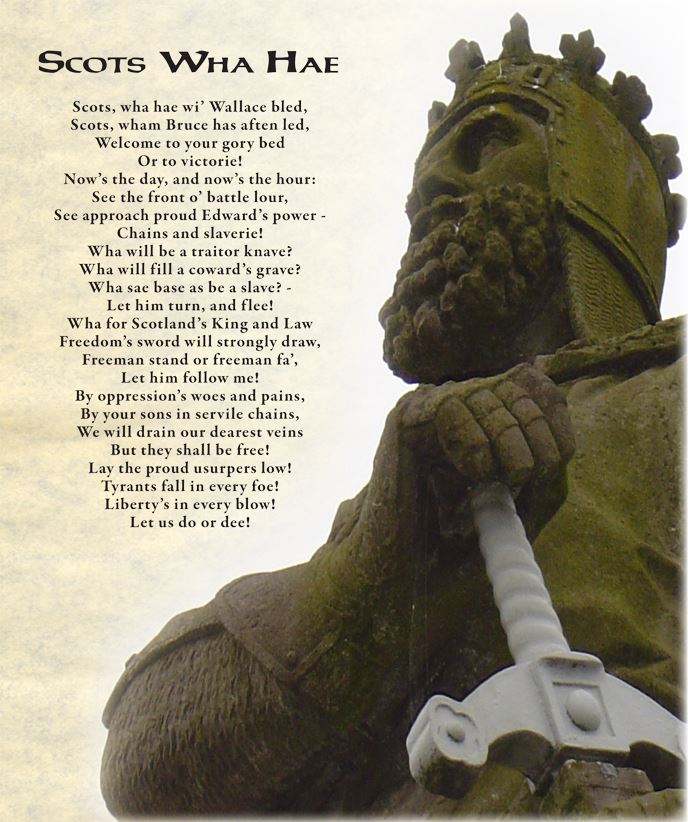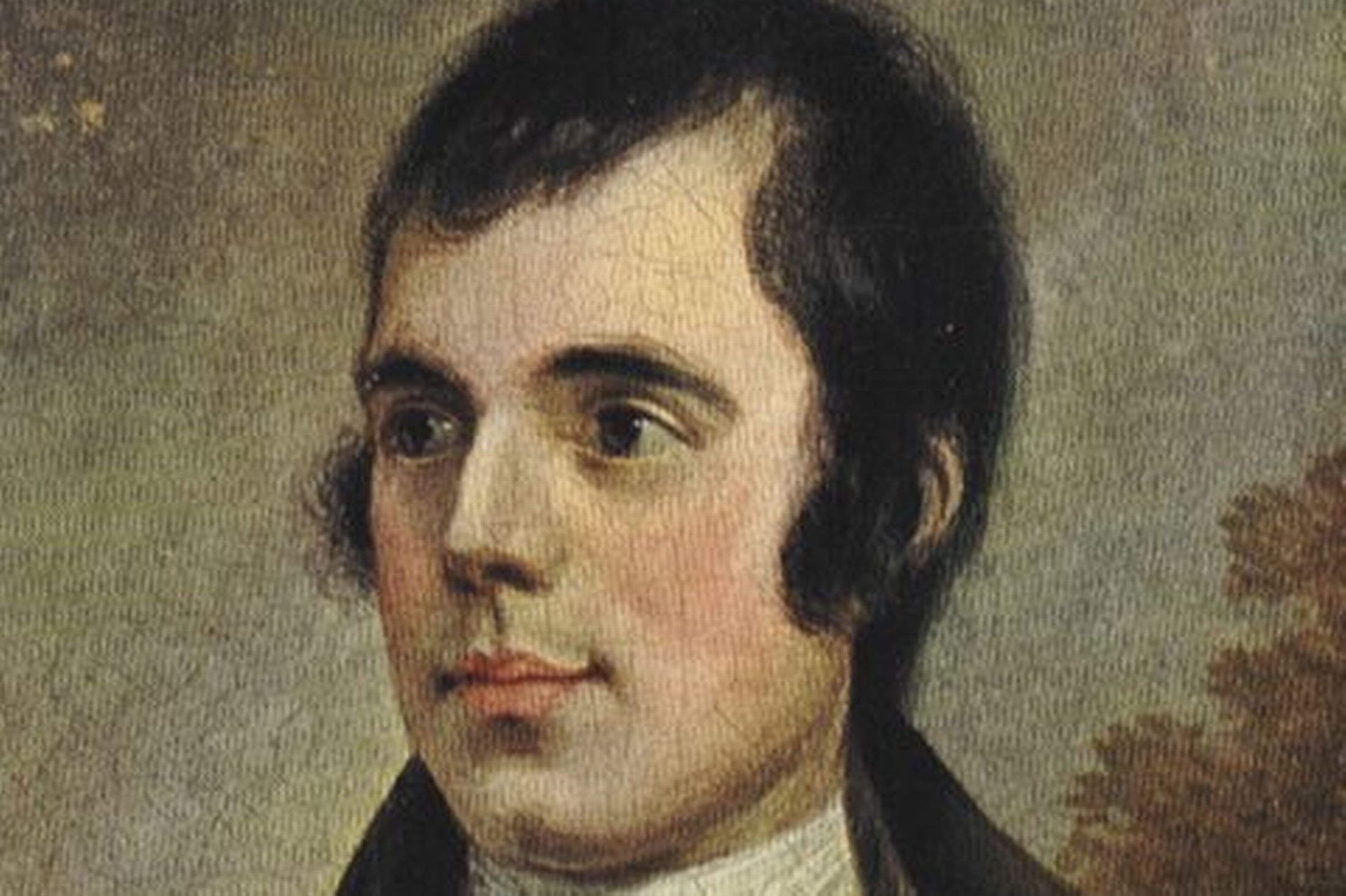This is a Scots poem written by Robert Burns in 1785 as said in the beginning of the poem. It is said that Burns accidentally destroyed a mouse’s house while ploughing a field and that he wrote the poem on the spot. The whole wording of the poem is in Scottish accent making it difficult for non-Scottish to grasp the meaning of certain words easily. Since then, it has been converted to modern English. One of the most famous lines in poetry, ‘The best laid schemes o’ Mice an’ Men Gang aft agley’ arises from this poem.
Setting of the poem: The setting of the poem is in a bare field about to be hit by the cold winds of winter.
Poetic Devices
Stanza:The poem is written in 8 stanzas of 6 lines each.
Rhyme: Each stanza has its own rhyme scheme. The first stanza has AAABAB as its rhyme scheme. The second has the same scheme. But the third stanza has AABCBC as its rhyme scheme.
Enjambment: Lines of verse continue to the next line in the poem, often seen in cases of the 3rd and 5th lines of the poem.
Alliteration: Alliteration is largely prevalent in the poem. ‘House or hald’, ‘cranreuch cauld’, ‘bickerin brattle’ are some examples of alliteration.
Summary of the poem To a Mouse
The speaker of the poem is talking to a mouse in the poem. The speaker had accidentally destroyed the mouse’s home while ploughing the field. The mouse is now without a house and winter is fast approaching. The man comforts the panicked mouse first, and then he apologizes not just on behalf of himself but of the whole mankind, as he feels that mankind’s domination ruined the ‘social union’. The speaker says he knows the mouse steals but he doesn’t blame the mouse for that. He understands that it has to live and anyway, whatever it steals is just the amount of cleansing his soul undergoes in return. He then speaks of how the mouse thought to ride out the winter in comfort but then he came along and destroyed the house. But he says the mouse isn’t alone in that regard. The best laid plans of mice and men often go astray. Still, he says the mouse has got it better, as it lives only in the present and is not troubled by events of the past nor is it bothered by the fear of future.
Analysis of the poem To a Mouse
The poem starts with the description of the mouse; the speaker doesn’t explicitly say that he’s speaking to a mouse but the title and the descriptions in the first verse of the poem give it away. He describes the beastie (creature) as wee (small), sleeket (smooth), cowran (cowering) and tim’rous (fearful). The speaker exclaims what a panic it was in that beast’s breast. The speaker manipulates words’ ending for the rhyme scheme. He says the mouse need not immediately start to bicker. ‘bickering brattle’ means an argumentative rattling sound, or in this case, squeaking. He continues by saying that he would loath to chase the mouse with murdering prattle. Prattle is a tool not unlike a small spade but with a long handle. Laith means loath and rin means run. All the words here are in Scottish accent. The poem is written in the poet’s native accent.
The speaker says that is sorry that man’s domination has ruined the social union. The speaker doesn’t just apologize for himself for destroying the mouse’s house; but he apologizes on behalf of all mankind because his domination over other creatures has destroyed the social unification they used to have. He says that the mouse is justified to be startled by him, what with the bad reputation mankind has. The speaker describes himself as poor, earth-born companion and mortal. He says so, so as to sooth the mouse’s startled and panicked self.
The speaker speaks of the mouse’s nature next. He says he does not doubt that the mouse steals food; but what of it, he says, after all, it too must live. In Scottish accent, daimen icker stands for an ear of corn, and a thrave stands for 24 ears of corn. The speaker says that the mouse steals but 1 in 24 ears of corn. He doesn’t mind that. He would get a blessing, a small bit of cleansing of his soul of sins, and he would, in exchange, never miss that small bit of corn.
The speaker then speaks of the mouse’s house. He describes it as wee-bit (very small) house and now, it is in ruins. The silly walls (not silly literally, but weak) are now being strewn around by the winds. And now, the mouse has nothing to build a new house with. It wasn’t the right time of the year for foggage green. Foggage in Scotland means a second growth of grass. The mouse constructs its house with this grass but now, it isn’t there anymore. And what’s more; December is coming, a time of snell (quick) and keen (sharp) winds. And the mouse has nothing to protect itself with.
The speaker then speaks of the mouse’s plans; or at least what he thinks them to be. He says the mouse saw the fields bare and knew that the tiring period of winter was coming fast. And so, it thought to dwell in its home, safe from the blast of cold wind. Till now, when the speaker crashed the mouse’s cell (house) with his coulter (a vertical cutting blade fixed in front of a ploughshare). Now cell here reminds us of prisons, or of rooms in which monks or nuns sleep. The speaker means to say that the mouse house was like that, bare and simple.
He then thinks of all the work the mouse put into building that house; of how it cost her many nibbles to make that heap of leaves and stibble (which is the Scottish variant of stubble). And for all that trouble, she’s now been turned out from its house and hald (property) and now, she has to face the winter frosty cold. Cranreuch stands for frost and cauld stands for cold.
The speaker says the mouse isn’t alone in this; foresight may be in vain was already proven by many before. The best plans made by man and mouse often go astray and leaves us with, in place of the promised joy, nothing but grief and pain. The line ‘The best laid schemes o’ Mice an’ Men Gang aft agley’ is the most famous line of the poem; in fact one of the most famous lines in poetry. It’s so famous that it influenced some of the best works with the title ‘Of Mice and Men’.
The speaker ends the poem by saying that the mouse was still when compared to him. The mouse lives only in the present. But the speaker can go backward into the past and think about his dreary prospects. He can forward to the future but he cannot see anything; so he can only guess and fear it. The mouse is free from these troubles.
Central Idea of To a Mouse: The central idea of the poem, if it is believed that Burns did destroy a mouse house and wrote the poem on the spot, is to tell exactly what went on through his mind when he did that. But as is the case with many poems, this is open to interpretation too. Some say the mouse is a metaphor for poor people; some say it is a reflection of how things go wrong when everything was planned right, of how there is always an unknown. Personally, the first idea seems more appropriate.
Tone of the poem To a Mouse: The tone of the poem is comforting in the beginning. The mouse was startled and the speaker tries to comfort it. It then turns apologetic, then into one of contemplation. It then turns a bit melancholic and depressing when he says of how the best laid plans can go awry and nothing is set in stone. The final tone of the poem is self pity when the speaker says of how he has the past and future too in his thoughts.
Conclusion: Robert Burns writes an imaginative piece of work with ‘To a Mouse’; and at the end, makes the reader think about life, about futility and about the unknown.
Some online learning platforms provide certifications, while others are designed to simply grow your skills in your personal and professional life. Including Masterclass and Coursera, here are our recommendations for the best online learning platforms you can sign up for today.
The 7 Best Online Learning Platforms of 2022
- Best Overall: Coursera
- Best for Niche Topics: Udemy
- Best for Creative Fields: Skillshare
- Best for Celebrity Lessons: MasterClass
- Best for STEM: EdX
- Best for Career Building: Udacity
- Best for Data Learning: Pluralsight
